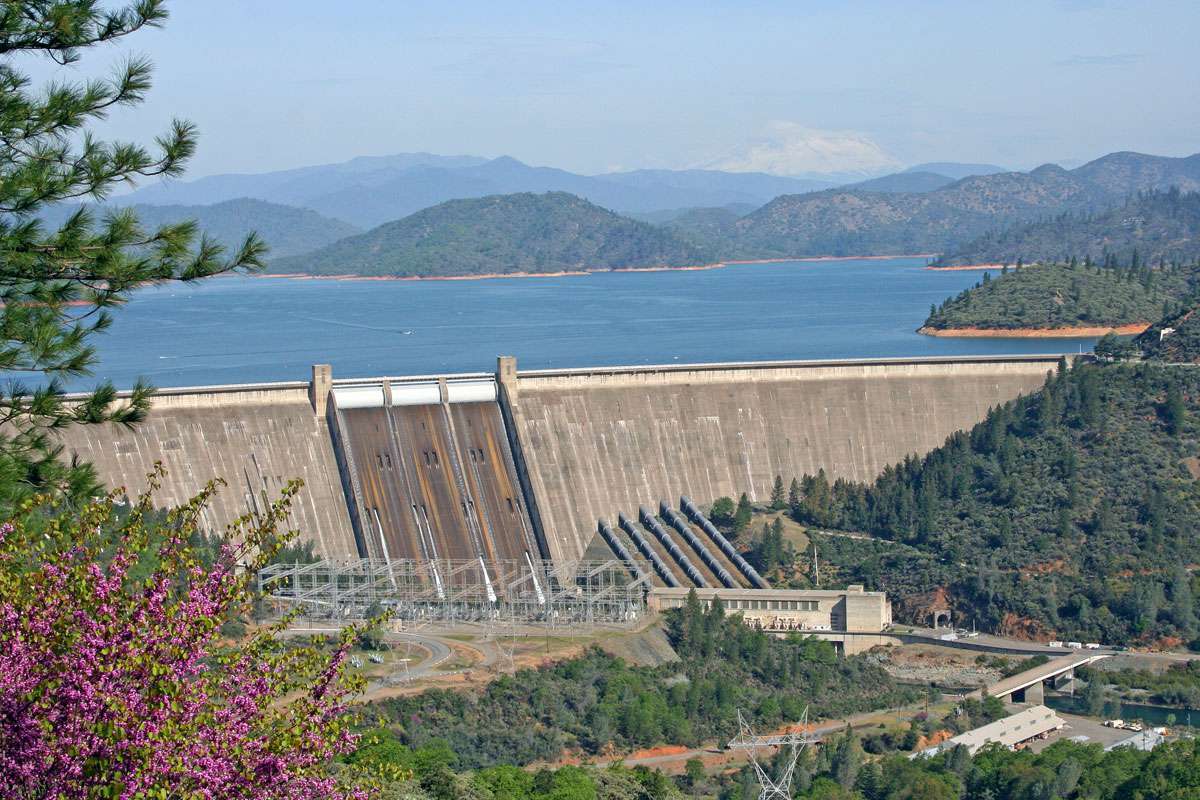
Ever wondered how dams play a crucial role beyond just holding back water? Dams are marvels of engineering that dot landscapes around the world, serving purposes that go far beyond the obvious. From generating clean energy to providing water for agriculture and cities, these structures are pivotal in shaping human civilization. But what makes them truly fascinating? Well, buckle up because we're about to dive into the 19 best facts about dams that will surely make your jaw drop. From ancient feats of engineering to modern-day hydroelectric powerhouses, dams have stories that are as deep and flowing as the waters they contain. Ready to get your feet wet in the world of dams? Let's plunge into the riveting facts that highlight why these structures are anything but dam boring!
Key Takeaways:
- Dams are essential for managing water, generating clean energy, and supporting agriculture, but they also have environmental and social impacts that spark controversy.
- The future of dam construction involves innovative, sustainable solutions to balance development and conservation while ensuring global water security.
What Are Dams and Why Are They Built?
Dams are large structures built across rivers or streams to control water flow, store water, and generate electricity. Constructed for various purposes, they play a crucial role in water management, providing irrigation, flood control, and a consistent water supply for domestic and industrial use. Additionally, many dams are sources of hydroelectric power, contributing to renewable energy production.
-
The primary purpose of most dams is to store water for irrigation, making arable farming possible in regions with inconsistent rainfall.
-
Hydroelectric power generation is another significant reason for building dams, offering a clean, renewable energy source.
The World's Largest Dam
When talking about size, the Three Gorges Dam in China holds the title for the world's largest dam by total capacity. This marvel of modern engineering spans the Yangtze River and serves multiple functions, including flood control, hydroelectric power generation, and navigation improvement.
-
The Three Gorges Dam is the world's largest power station in terms of installed capacity, with a whopping 22,500 MW.
-
It also plays a vital role in reducing the potential for floods downstream, protecting millions of people and vast areas of agricultural land.
Environmental Impact of Dams
While dams have numerous benefits, they also come with environmental costs. Altering natural water courses and ecosystems can have profound effects on local flora and fauna.
-
Dams can lead to the loss of biodiversity, as species that rely on free-flowing river systems may not survive the changes in habitat.
-
They also contribute to the displacement of communities, as the creation of reservoirs often requires relocating people living in the flood zones.
Innovations in Dam Construction
Technological advancements have led to innovative approaches in dam construction, aiming to minimize environmental impact and enhance efficiency.
-
New materials and construction methods allow for the building of stronger dams that can withstand natural disasters better.
-
Some modern dams are designed to allow fish and other aquatic life to migrate, reducing the impact on local ecosystems.
The Role of Dams in Renewable Energy
Dams are pivotal in the global shift towards renewable energy. By providing a reliable source of hydroelectric power, they help reduce reliance on fossil fuels.
-
Hydroelectricity is one of the most cost-effective sources of renewable energy, making it a key player in the fight against climate change.
-
The flexibility of hydroelectric power plants allows them to adjust quickly to changing energy demands, making them an essential component of modern energy grids.
Historical Significance of Dams
Dams have been part of human civilization for thousands of years, playing critical roles in the development of societies.
-
The ancient Romans were among the first to build large dams for water supply and irrigation, showcasing early engineering prowess.
-
Some of the world's oldest dams, like the Jawa Dam in Jordan, date back to around 3000 BC, highlighting the long history of human interaction with rivers.
Future of Dam Construction
With growing concerns over climate change and sustainable development, the future of dam construction is likely to see even more innovation.
-
Researchers are exploring low-impact hydropower solutions that cause minimal environmental disruption.
-
The concept of "run-of-the-river" hydroelectricity, which generates power without large reservoirs, is gaining traction as a more sustainable option.
Dams and Global Water Security
Dams play a crucial role in ensuring global water security, especially in regions prone to droughts and water scarcity.
-
By storing water during rainy seasons, dams ensure a steady water supply throughout the year, critical for both human consumption and agriculture.
-
They also help manage water resources more efficiently, allowing for the redistribution of water to areas in need.
Controversies Surrounding Dam Projects
Despite their benefits, dam projects often spark controversy, particularly regarding their environmental and social impacts.
-
Large dam projects can lead to significant ecological changes, sparking debates on their overall sustainability.
-
The displacement of local communities for dam construction has raised ethical concerns, leading to calls for better compensation and resettlement programs.
-
Finally, the debate over dams often centers on finding a balance between development and conservation, a challenge that will continue to shape their future.
A Final Ripple of Knowledge
Dams, those mighty structures that harness water, are more than just feats of engineering. They're a testament to human ingenuity, balancing the needs of society with the rhythms of nature. From providing renewable energy and irrigation to flood control and water supply, their roles are as varied as they are vital. Yet, they also remind us of the importance of sustainable development, highlighting the need to tread carefully in our quest for progress. As we've journeyed through the fascinating world of dams, it's clear they hold lessons not just in the water they manage, but in the stories they tell about our relationship with Earth. Let's carry these insights forward, respecting the power of nature as we continue to build and innovate for a better tomorrow.
Frequently Asked Questions
Was this page helpful?
Our commitment to delivering trustworthy and engaging content is at the heart of what we do. Each fact on our site is contributed by real users like you, bringing a wealth of diverse insights and information. To ensure the highest standards of accuracy and reliability, our dedicated editors meticulously review each submission. This process guarantees that the facts we share are not only fascinating but also credible. Trust in our commitment to quality and authenticity as you explore and learn with us.


